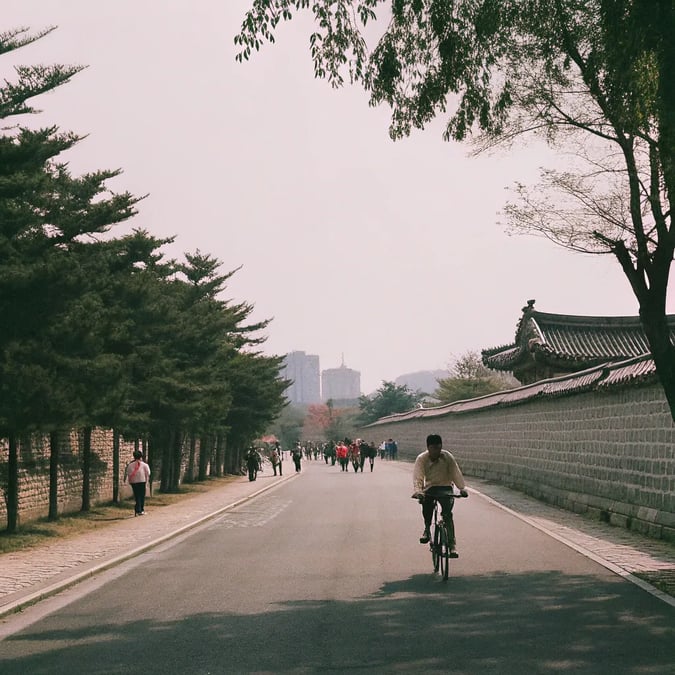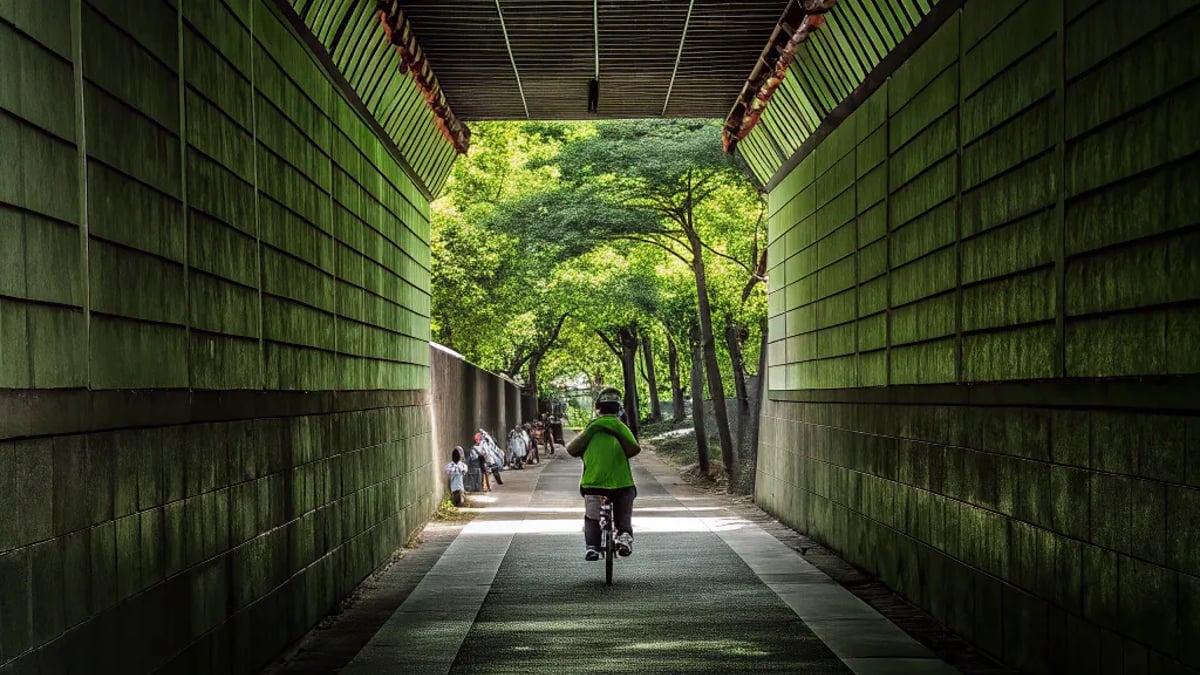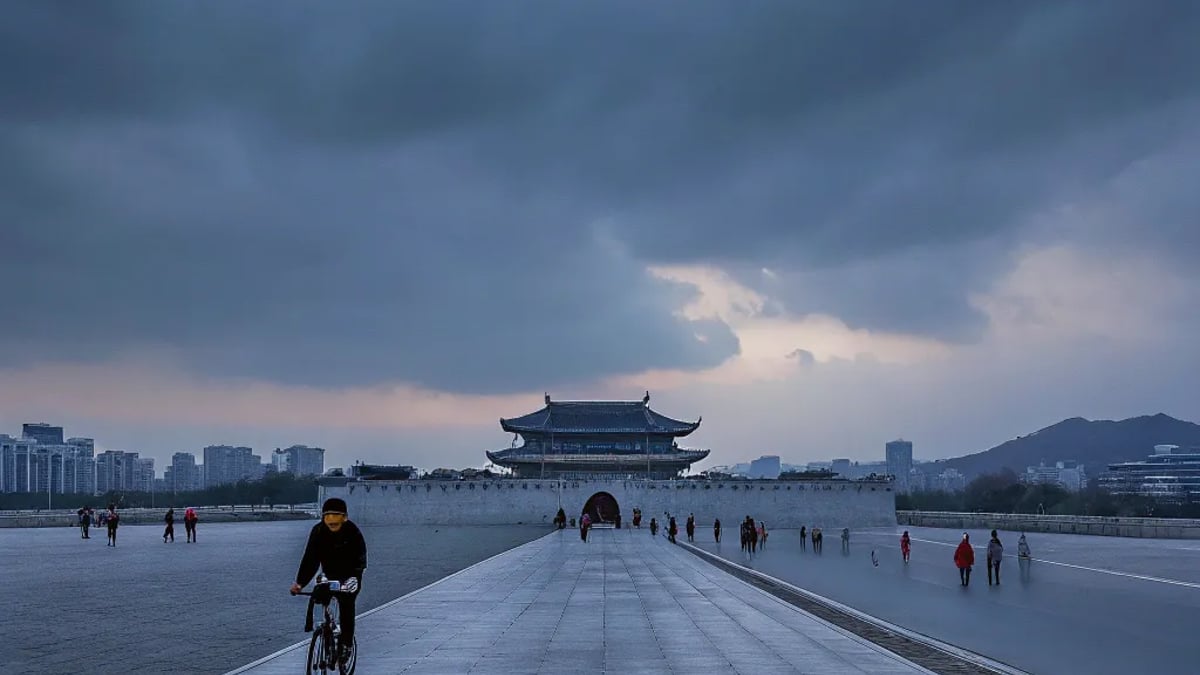
Seoul's sprawling metropolis might seem overwhelming at first glance, but exploring the city on two wheels offers a refreshing perspective that many tourists miss. With over 1,200 kilometers of dedicated cycling paths and an impressive public bike rental system, Seoul has quietly become one of Asia's most bike-friendly capitals in recent years.
The Cycling Culture in South Korea
South Korea has embraced cycling with remarkable enthusiasm. What began as a practical transportation solution has evolved into a significant aspect of Korean fitness culture. The government's investment in cycling infrastructure reflects this cultural shift, with Seoul leading the charge.
"Biking is a huge part of fitness culture in Korea," notes Aclipse, an organization helping foreigners navigate life in Korea. This emphasis on cycling isn't just about exercise—it's become intertwined with social activities, environmental consciousness, and urban mobility solutions.
The popularity of cycling in Seoul can be traced to several factors:

- Environmental concerns and traffic congestion
- Health consciousness among residents
- The influence of professional cycling competitions
- Government initiatives promoting sustainable transportation
Seoul's relatively flat terrain along the Han River makes it accessible to cyclists of all skill levels. While the city's hills can provide challenges for those seeking them, beginners can enjoy extensive flat routes that showcase the city's beauty.
Understanding Seoul's Bike Rental System
Seoul Bike (also known as "Ttareungyi") is the city's public bike-sharing program, launched in 2015. These distinctive green and white bicycles have become ubiquitous throughout the city.
To rent a bike:
- Download the Seoul Bike app (available in English)
- Register with a phone number and payment method
- Locate a nearby station using the app
- Scan the QR code or enter the bike number
- Return to any station when finished
Rental costs are remarkably affordable:
- 1-hour pass: ₩1,000 (approximately $0.85)
- Day pass: ₩5,000 (approximately $4.25)
- Weekly pass: ₩15,000 (approximately $12.75)

For tourists, the process is straightforward, though having a local phone number simplifies the registration. Many hotels and guesthouses can assist with the process if needed.
Must-Ride Routes for Visitors
Han River Cycling Path
The crown jewel of Seoul's cycling infrastructure is undoubtedly the Han River Cycling Path. This extensive network stretches for over 80 kilometers along both banks of the river, offering stunning views of the city skyline.
Travel blogger Lexx from Travel Lexx shares his experience: "I decided to follow my guidebook's advice and hire a bike to head on a ride along the Han River. It was a great way to get my bearings and explore the city."
The path is well-maintained and completely separated from vehicle traffic, making it ideal for casual riders and families. Along the route, you'll find:
- Multiple parks and rest areas
- Water fountains and public restrooms
- Convenience stores and food vendors
- Striking views of Seoul's iconic bridges
The most popular section runs through Yeouido, Seoul's financial district, where cherry blossoms create a stunning pink canopy in spring (typically early April).
Cheonggyecheon Stream Route
For a more urban experience, the Cheonggyecheon Stream offers a fascinating ride through Seoul's heart. This 11-kilometer restored stream cuts through downtown Seoul, providing a serene escape from the bustling streets above.
The cycling path follows the stream below street level, creating a unique perspective of the city. Historical bridges, art installations, and seasonal decorations make this route particularly photogenic.
What makes this route special:
- Cooler temperatures (typically 3-5°C lower than street level)
- Historical significance as a restored urban waterway
- Proximity to major attractions like Gwangjang Market
- Evening illuminations that transform the stream after dark
Bukhansan National Park Trails
For more adventurous cyclists seeking elevation and challenges, the trails surrounding Bukhansan National Park offer exhilarating rides with breathtaking views. While not suitable for beginners, these routes reward effort with panoramic vistas of Seoul.
Be aware that some sections require dismounting and walking your bike. The terrain can be challenging, so mountain bikes are recommended for these trails.
Café Culture and Cycling: Perfect Companions
Seoul's renowned café culture intersects beautifully with its cycling routes. Strategic stops at distinctive cafés enhance the biking experience, providing rest, refreshment, and cultural immersion.
Riverside Café Stops
The Han River cycling path features numerous cafés with riverside views. These range from chain establishments to unique independent shops:
Café Onion Seongsu Located near Seoul Forest, this industrial-chic café occupies a converted warehouse. Its minimalist concrete aesthetic and excellent pastries make it a favorite among locals and visitors alike.
Café Able Situated in Seongsu-dong (often called Seoul's Brooklyn), this café offers excellent coffee in a plant-filled space. Its large windows provide natural light and views of the neighborhood's transformation from industrial zone to creative district.
Garden 5 Tool Near the Ttukseom Resort station, this café features an expansive outdoor seating area overlooking the river. Their signature cold brew and fruit-infused drinks are particularly refreshing after a long ride.
Cultural Café Experiences
Beyond the riverside, several cafés offer unique cultural experiences worth dismounting for:
Daelim Warehouse This combination of gallery and café in the Mullae Art District showcases contemporary Korean art alongside excellent coffee. The industrial space reflects the neighborhood's manufacturing history.
Kyung-in Museum of Fine Art Located in a traditional hanok (Korean house), this café allows visitors to enjoy tea and traditional Korean desserts while appreciating the architectural details of the historic building.
Thanks Nature Café This unusual café in Hongdae features resident sheep in an outdoor pen, creating one of Seoul's most Instagram-worthy coffee stops. The café specializes in organic beverages and Belgian waffles.
Cultural Sites Accessible by Bike
One of cycling's greatest advantages is the ability to connect cultural sites efficiently. Seoul's major attractions become more accessible and enjoyable when explored by bike.
Historical Palaces Circuit
A well-planned cycling route can connect Seoul's five grand palaces:
- Gyeongbokgung Palace - The largest and most magnificent
- Changdeokgung Palace - A UNESCO World Heritage site with a secret garden
- Changgyeonggung Palace - Known for beautiful grounds and a greenhouse
- Deoksugung Palace - Unique for its Western-style buildings
- Gyeonghuigung Palace - The smallest and most recently restored
This 15-kilometer loop takes approximately 2-3 hours, including brief stops at each palace. For a deeper experience, consider locking your bike to explore one or two palaces more thoroughly.
Modern Architecture Tour
Seoul's contemporary architecture provides a fascinating counterpoint to its historical sites. A self-guided cycling tour might include:
- Dongdaemun Design Plaza (DDP) - Zaha Hadid's futuristic landmark
- Sebitseom - Floating islands on the Han River
- Seoul City Hall - Glass wave design contrasting with the former colonial-era building
- Lotte World Tower - Korea's tallest building with observation deck
This route covers approximately 18 kilometers and offers insights into Seoul's rapid modernization and architectural ambitions.
Safety and Etiquette for Cycling in Seoul
While Seoul offers excellent cycling infrastructure, understanding local safety practices and etiquette enhances the experience.
Safety Considerations
"My advice for future visitors is to stay safe of course," suggests Mitali Joshi, who studied abroad at Hanyang University in Seoul. This applies particularly to cycling in an unfamiliar city.
Essential safety tips include:
- Helmets aren't legally required but are strongly recommended
- Use hand signals when turning or stopping
- Be cautious at intersections, even when you have right of way
- Carry identification and emergency contact information
- Download offline maps in case of connectivity issues
- Learn basic Korean phrases related to directions and emergencies
Many dedicated cycling paths have separate lanes for pedestrians and cyclists. Respecting these designations prevents accidents and friction with locals.
Understanding Korean Healthcare for Cyclists
While nobody plans for accidents, knowing how to access healthcare provides peace of mind. "Understanding the Korean healthcare system can help you maintain your health," advises Aclipse.
Korea's healthcare system is highly accessible to visitors:
- International clinics in major hospitals offer English services
- Pharmacies (marked with a green cross) can provide basic first aid
- The emergency number (119) connects to English-speaking operators
- Travel insurance covering cycling is strongly recommended
Most minor cycling injuries can be treated at local clinics (called "의원" or "uiwon") with minimal waiting time. These clinics typically accept credit cards and provide receipts for insurance claims.
Seasonal Considerations for Seoul Cycling
Seoul experiences distinct seasons, each offering unique cycling experiences and challenges.
Spring (March-May)
Spring brings moderate temperatures and spectacular cherry blossoms. The Han River paths become particularly crowded during peak bloom weekends in early April.
Benefits:
- Comfortable temperatures (10-20°C)
- Beautiful flowering trees along many routes
- Extended daylight hours for evening rides
Challenges:
- Occasional yellow dust from China (check air quality apps)
- Crowded popular routes during cherry blossom season
- Spring showers (carry a lightweight rain jacket)
Summer (June-August)
Summer in Seoul is hot and humid with a monsoon season typically in July.
Benefits:
- Extended park and attraction hours
- Evening river breezes provide relief from heat
- Numerous outdoor festivals and events
Challenges:
- High humidity and temperatures often exceeding 30°C
- Sudden heavy downpours during monsoon season
- Stronger UV radiation requiring sun protection
Morning rides (before 10 AM) or evening rides (after 6 PM) are recommended during summer to avoid the most intense heat.
Autumn (September-November)
Many consider autumn the ideal season for cycling in Seoul, with comfortable temperatures and stunning foliage.
Benefits:
- Clear skies and low humidity
- Spectacular fall colors, especially in late October
- Comfortable temperatures (15-25°C)
Challenges:
- Popular routes become crowded during peak foliage weekends
- Earlier sunsets limit evening riding
- Occasional typhoon systems (though rare in Seoul)
Winter (December-February)
Winter cycling in Seoul requires preparation but offers unique experiences with fewer crowds.
Benefits:
- Nearly empty cycling paths
- Clear visibility for city views
- Unique winter landscapes, especially after light snow
Challenges:
- Cold temperatures, often below freezing
- Shorter daylight hours
- Occasional ice patches on less-maintained paths
Proper layering, gloves, and face protection make winter cycling comfortable for most riders. The Han River paths are generally well-maintained even in winter.
How Cycling Connects You to Seoul's Soul
Beyond the practical aspects, cycling offers a unique connection to Seoul's essence that other transportation modes can't match.
"There are designated stops along the ride to encourage bike-riders to explore these grounds," notes Tour de Plantersville, highlighting how cycling naturally incorporates exploration into the journey.
Biking allows you to:
- Experience neighborhood transitions gradually rather than emerging from subway stations
- Notice architectural details and street art easily missed from cars or buses
- Interact with locals in a more natural context
- Discover unexpected shops, cafés, and viewpoints
- Feel the city's rhythm through its topography and flow
Many visitors report that cycling provided their most authentic Seoul experiences, creating memories beyond standard tourist itineraries.
What's the best time of day to cycle in Seoul?
This question depends on your priorities and the season. Generally speaking:
Early Morning (5-8 AM): For photographers and those seeking tranquility, early morning rides offer the best lighting and emptiest paths. The Han River with morning mist rising creates magical scenes. This time is particularly recommended in summer to avoid heat.
Mid-Morning to Early Afternoon (9 AM-2 PM): Comfortable in spring and fall, but can be intensely hot in summer or cold in winter. This timeframe works well for combining cycling with cultural site visits, as most attractions open around 9-10 AM.
Late Afternoon to Sunset (4-7 PM): Perhaps the most popular timeframe, offering cooler temperatures in summer and beautiful lighting for photography. The Han River cycling path becomes lively with locals after work hours.
Night Riding (7-10 PM): Seoul's excellent path lighting makes evening rides safe and enjoyable. The city's bridges and buildings illuminate in colorful displays, creating a completely different experience. Summer evenings are particularly pleasant with river breezes.
For most visitors, a late afternoon ride that extends into early evening provides the best balance of comfortable conditions, good lighting, and the opportunity to see Seoul transition from day to night.
Disclaimer
This content is provided for informational purposes only and is not a substitute for professional medical advice. Cycling involves physical exertion and inherent risks. Consult your physician before beginning any new exercise program, particularly if you have pre-existing health conditions. While cycling in Seoul is generally safe, all physical activities carry some risk of injury. Always wear appropriate safety gear, follow local traffic laws, and ride within your ability level.
Seoul's cycling infrastructure offers visitors a unique perspective on this dynamic city. From riverside paths to cultural circuits, exploring Seoul by bike creates memories that last well beyond your trip. As Korean cycling culture continues to evolve, there's never been a better time to experience the city on two wheels.
Whether you're seeking exercise, cultural insights, or simply a practical way to navigate between attractions, Seoul's cycling paths provide an authentic connection to the city that many visitors miss. So grab a Ttareungyi, plot your route, and discover Seoul's hidden gems at the perfect pace.
Tags

About Elliott Greenway the Author
Elliott Greenway is a seasoned environmentalist and avid cyclist with over a decade of experience promoting sustainable transport solutions. His expertise in eco-friendly cycling has inspired countless individuals to take up cycling as a means to reduce their carbon footprint and embrace a healthier lifestyle.
Recommended Articles
TV Series Returning in 2026 After Initial Cancellation
Exciting revivals of beloved TV series are set for 2026, showcasing the evolving landscape of television and fan engagement.
Exploring Approaches to Modern Parenting Challenges
Discover innovative strategies for tackling modern parenting challenges and nurturing emotional well-being in today's complex family dynamics.
Eyelid Dermatitis Explained: Symptoms, Causes, and Solutions
Discover eyelid dermatitis, its symptoms, causes, and effective solutions to manage and treat this uncomfortable skin condition.
Eyelid Dermatitis Triggers That May Be Lurking in Your Routine
Discover common eyelid dermatitis triggers in your daily routine, from skincare products to allergens, and learn how to manage your symptoms effectively.
The Best Foods to Strengthen Your Bones as You Age
Discover the best foods that promote bone health as you age, focusing on essential nutrients like calcium and vitamin D for stronger bones.




